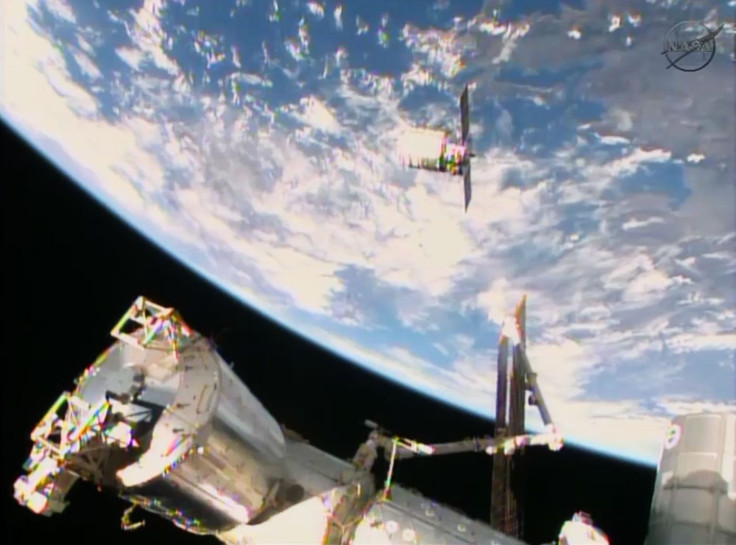NASA's Newest Experiment Entails Putting Space On Fire

NASA is up to some fun stuff in a new experiment: setting space on fire. Called Saffire, the experiment serves to help scientists better understand how flames act in a micro-gravity environment.
"No space agency has had the opportunity to study a spacecraft fire of anything larger than an index card in long-term low gravity," said David Urban, principal investigator of the Saffire experiment, in a conference call with reporters on Wednesday.
The first of three Saffire experiments—called Saffire-I—took place earlier this summer in June and the fire burned for 20 minutes within Orbital ATK’s Cygnus spacecraft, which collects garbage from the International Space Station (ISS). A hot wire lit a 3-feet by 1-foot cotton and fiberglass material. Sensors and cameras gathered information about the fire, revealing the flames “spread in the direction of wind very steady and surprisingly slow.”
After literally playing with fire, the spacecraft orbited Earth for six days to transmit high-resolution images and data from the experiment. Once the 25 gigabits of data was delivered, the spacecraft self destructed by entering the Earth’s atmosphere.
The second Saffire experiment will see the impact of fire on nine different samples to see how flames vary in space. Similar to Saffire-I, the experiment will take place after the Cygnus spacecraft unloads and undocks after departing for a cargo run to the International Space Station next Thursday.
According to Urban, fires are a “significant risk” to spacecrafts and the findings from these experiments can make future missions more secure.
“Understanding how fire spreads in a microgravity environment is critical to the safety of astronauts who live and work in space,” wrote NASA on its website. “And while NASA has conducted studies aboard the space shuttle and International Space Station, risks to the crew have forced these experiments to be limited in size and scope. Fire safety will be a critical element as NASA progresses on the journey to Mars and begins to investigate deep space habitats for long duration missions.”
© Copyright IBTimes 2024. All rights reserved.





















